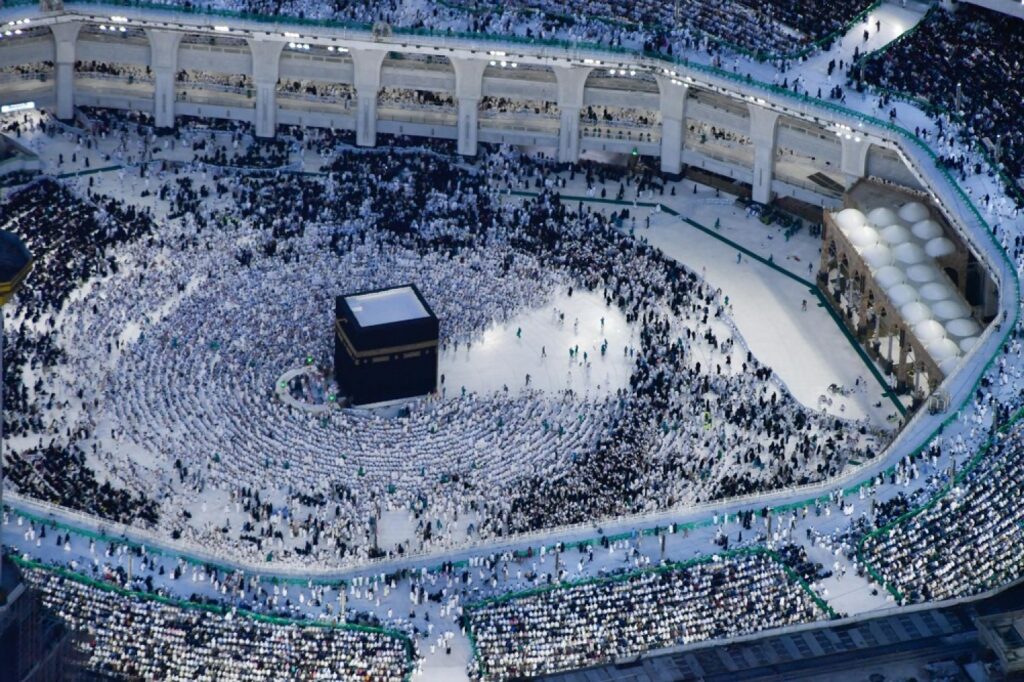Visiting the Grand Mosque in Makkah during the sacred month of Ramadan is an unparalleled experience for millions of Muslims worldwide. As the holiest site in Islam, the Grand Mosque witnesses a remarkable surge in pilgrims and worshippers seeking spiritual fulfillment and divine blessings. However, navigating through the bustling crowds and logistical challenges demands meticulous planning and essential knowledge. In this comprehensive guide, we provide invaluable insights and tips to ensure a seamless and enriching pilgrimage to the Grand Mosque during Ramadan.
Getting to the Grand Mosque
Public Transport Options
Buses from King Abdulaziz International Airport
Upon arrival at King Abdulaziz International Airport in Jeddah, pilgrims can avail themselves of the convenient public transportation buses directly connecting to the central area surrounding the Grand Mosque. These buses provide a hassle-free journey, facilitating pilgrims’ transition to the sacred site.
Haramain Train Service
The Haramain high-speed train offers an efficient route from King Abdulaziz International Airport to Rusayfah station in Makkah. From there, pilgrims can easily access various local transportation options to reach the Grand Mosque, ensuring a swift and comfortable travel experience.
Taxis and Shuttle Transportation
Taxis
For pilgrims seeking a direct and personalized mode of transportation, taxis offer the flexibility to travel as close to the Grand Mosque as possible, adhering to safety regulations and traffic guidelines.
Shuttle Services
Utilizing shuttle transportation services proves to be a convenient option for pilgrims navigating between parking lots within the Holy Capital and public transit stations in the central area. These shuttle services facilitate a seamless transition, enhancing the overall pilgrimage experience.
Walking
For pilgrims residing in the central district and surrounding neighborhoods of Makkah, walking to the Grand Mosque emerges as a viable and preferred option. Not only does it allow pilgrims to immerse themselves in the spiritual ambiance of the city, but it also mitigates the challenges associated with vehicular congestion.
Parking Information
Inside Makkah Parkings
Al-Zahir Parking
Strategically located for pilgrims arriving from different parts of Makkah, Al-Zahir Parking offers easy access to shuttle services, ensuring convenient transportation to the Grand Mosque.
Kuday Parking
Situated closer to the central area, Kuday Parking serves as a prime parking spot for pilgrims seeking proximity to the Grand Mosque, facilitating seamless accessibility during Ramadan.
Prince Mutaib Road Parking
Ideal for pilgrims approaching from the direction of Prince Mutaib road, this parking facility provides a convenient option for those traveling to the Grand Mosque.
External Parking
Al-Sharaya Parking
To accommodate the influx of vehicles during Ramadan, Al-Sharaya Parking offers ample space for pilgrims arriving from farther areas, ensuring hassle-free parking arrangements.
Al-Laith Parking
Located towards the Al-Laith side, Al-Laith Parking serves as an alternative parking option for pilgrims arriving from that direction, contributing to the efficient management of vehicular traffic.
What to Know Before Your Visit
Prayer Times and Crowds
During Ramadan, the Grand Mosque and its surroundings experience heightened crowds, particularly before and during designated prayer times. Pilgrims are advised to arrive early to secure suitable prayer spaces, especially during peak hours.
Mataf Area for Tawaf
The Mataf area, designated for performing Tawaf, is reserved exclusively for Umrah performers throughout the day. Pilgrims should adhere to designated routes to enter and exit this area smoothly, ensuring the seamless execution of rituals.
Prayer Spaces
Given the substantial influx of worshippers during Ramadan, finding suitable prayer spaces within the Grand Mosque can pose a challenge. Pilgrims are encouraged to explore designated prayer areas, particularly during peak times, to ensure a serene and respectful environment for prayers.
Finding Your Way Inside the Grand Mosque
Helpful Security Personnel
Security personnel stationed throughout the Grand Mosque play a pivotal role in directing pilgrims to less crowded areas and ensuring overall safety and orderliness. Pilgrims are encouraged to seek assistance from security personnel for guidance and support.
Illuminated Sign Boards
The Grand Mosque features illuminated sign boards at its main entrances, utilizing a color-coding system to indicate the availability of prayer spaces. Pilgrims can rely on these sign boards for essential guidance, contributing to crowd management and safety measures.
Transportation Organization and Safety Precautions
To manage the influx of visitors during Ramadan, transportation of pilgrims to and from the Grand Mosque is meticulously organized. Public transport buses and pedestrian-friendly regulations prioritize safety and convenience, ensuring a smooth flow of pilgrims.
Ensuring safety during the pilgrimage is paramount, particularly in crowded areas. Pilgrims are advised to avoid rushing, consider the needs of the elderly and disabled, and follow directions provided by security personnel and sign boards.
General Instructions and Prohibitions
Adherence to Umrah permit regulations, document safety measures, and prohibitions against carrying weapons and engaging in disruptive activities are essential for maintaining the sanctity and safety of the Grand Mosque and its visitors.
In conclusion, visiting the Grand Mosque in Makkah during Ramadan is a profound spiritual journey that requires careful planning and adherence to essential guidelines. By understanding transportation options, parking facilities, prayer protocols, and safety measures, pilgrims can ensure a fulfilling and spiritually enriching pilgrimage experience.

